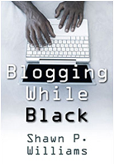Part Two of Dallas South interview with Barbara Trepagnier, author of Silent Racism
Here's is the second and concluding part of my interview with Barbara Trepagnier on her book Silent Racism.
Dallas South: How do White Americans like the ones you studied feel about the concept of institutional racism?
Barbara Trepagnier: Most white people do not understand how racism works, which means they don’t understand institutional racism. The predominant white definition of racism is that it is deliberate and hateful. But institutional racism is often neither deliberate nor hateful.
People in all sectors of society make decisions based on the information they carry in their heads. For most white people, that information is distorted by stereotypical images and paternalistic assumptions. It is not surprising that many white decisions have negative consequences for blacks and other people of color.
DS: There are a number of "liberal" or "progressive" white blogs that will not tolerate any accusation that their views regarding Barack Obama and the Presidential campaign are shaped by race. Why is it so hard for liberal/progressives to imagine that their ideas and beliefs can still be affected by race?
BT: I haven’t seen the blogs you are talking about, but I will say this: being accused (your word!) of racism is about the worst thing you can say about a white person today, especially someone who is racially progressive. Part of the problem is that the categories “racist” and “not racist” imply that people who do antiracist work are by definition “not racist.”
My work transforms the oppositional categories into a continuum that indicates that some people are “more racist” and others are “less racist” but no one is literally “not racist.” I believe that if the progressive blogger adopted this point of view, they would be much more open to seeing their own silent racism.
Think about it: If people define racism as hateful, they are likely to deny the accusation because they would never be hateful. I think the definition of racism today is very problematic and that the oppositional categories are part of the problem.
“Today, many white people sincerely believe that racism is hateful and rare. African Americans know that isn’t true because of their life experiences.”
DS: Do younger white Americans (Gen X, Gen Y, and younger) understand the history of racism and how prevalent it was in American society?
BT: Shawn, I don’t think any white people, young or old, know very much about racism in this country—maybe white history teachers do! In school, students are taught about ending slavery, not about slavery. Students are taught about the civil rights movement, not about segregation. Our historical legacy is filled with racism, and it did not magically disappear because legal segregation ended with the civil rights movement.
DS: What do you hope people will understand as a result of having read Silent Racism?
BT: I hope that well-meaning white people will begin to define racism differently. Today, many white people sincerely believe that racism is hateful and rare. African Americans know that isn’t true because of their life experiences. But whites who don’t have close friends who experience racism don’t see it unless it is blatant.
If well-meaning white people reject the oppositional categories and accept the racism continuum, a sea change will follow in the way people generally think about racism. Racism that is now hidden by the categories will be exposed. Well-meaning white people will stop feeling threatened by being perceived as somewhat racism.
It is important that well-meaning white people see that we are all are part of the racial status quo, regardless of racial/ethnic category, and that whites benefit from it and hold it in place. Well-meaning white people have an opportunity to reject the traditional model of racism—that some people are racist and some are not—and acknowledge our part in how racism operates. Just as some well-meaning white people during slavery worked in the Underground Railroad and some worked with blacks to end legal segregation, we need to courageously stand up against the silent racism of our day.
DS: Thanks Barbara!
BT: Thank you Shawn. I appreciate your thoughtful questions, and hope you will encourage people to check out the silent racism website at www.SilentRacism.com. There is a lot of information on the site, as well as a place to sign up for the silent racism email list.





